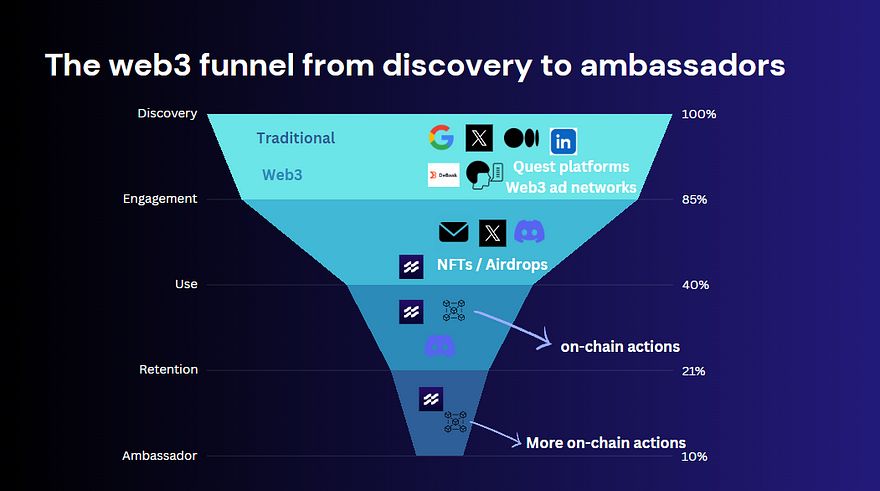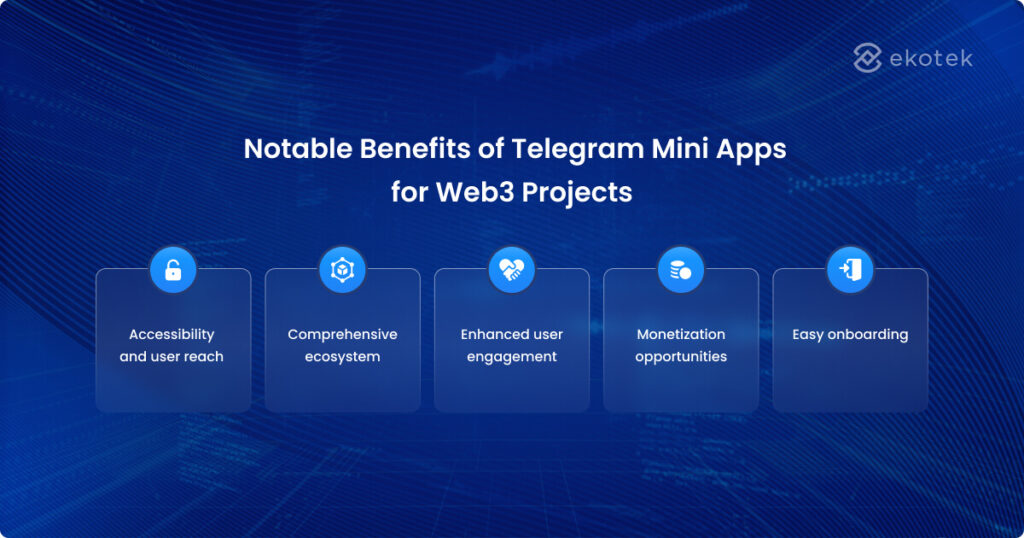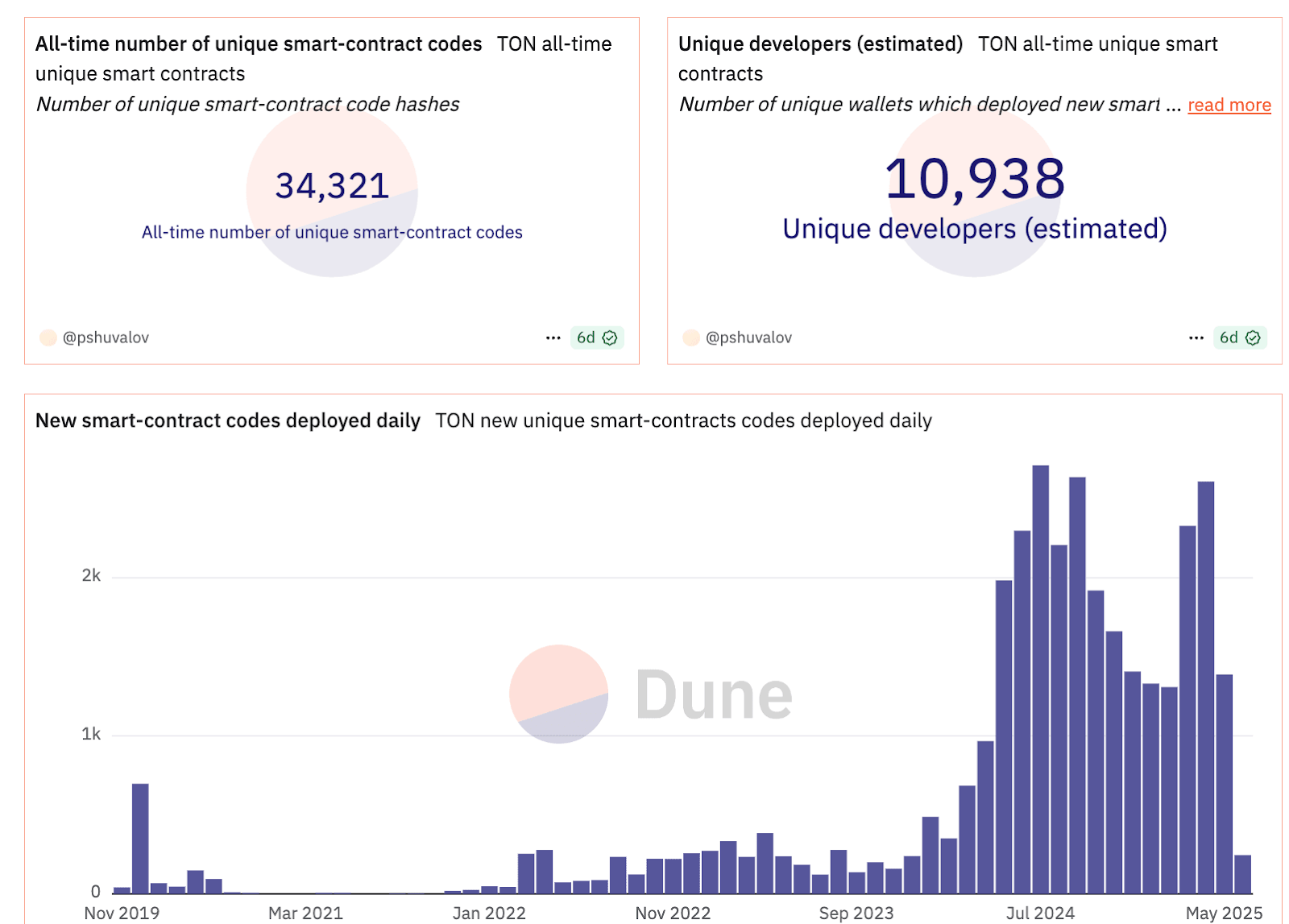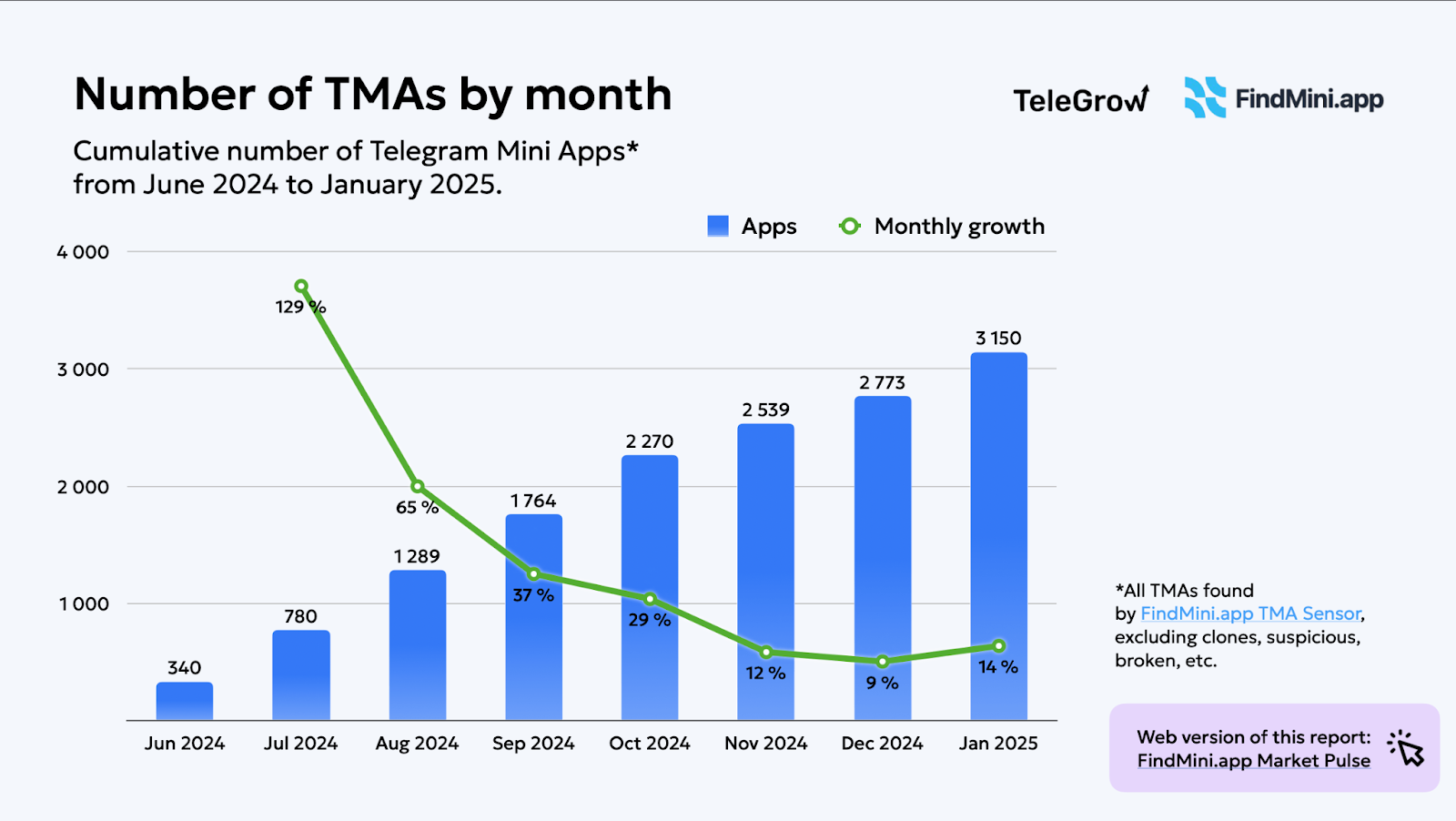In Web3, the challenge isn’t building innovative products, it’s getting people to actually use them. With wallet onboarding friction, unfamiliar UI, and fragmented funnels, even well-funded projects struggle to convert users beyond awareness. But a new growth engine is gaining momentum: Web3 miniapps Telegram.
By embedding full app experiences within Telegram’s native interface from sign-up to wallet action MiniApps are turning a messaging app into the fastest user acquisition channel in Web3.
Why Web3 MiniApps Telegram Deliver Better Onboarding Results
Traditional Web3 onboarding is notoriously fragmented. A typical user journey spans ad clicks, external wallets, third-party sites, and clunky extensions before they can even take action. Unsurprisingly, most users drop off early.

Telegram MiniApps compress the Web3 user funnel into a single interface (Source: Medium)
That’s where Web3 miniapps Telegram shift the paradigm. With these miniapps, users can:
- Access directly from a Telegram message, ad, or QR code
- Onboard with one-tap Telegram authorization (SSO)
- Interact with a wallet-native UX, powered by embedded TON wallets
- Transact instantly without ever leaving the Telegram interface
This compression of steps from discovery to engagement to usage redefines UX expectations. The entire journey that previously took several minutes now unfolds in under 30 seconds.
Compare this to the funnel above: even optimistic estimates show only ~20% of users perform on-chain actions after discovery. By collapsing all steps into Telegram’s native environment, MiniApps remove nearly every point of friction no downloads, no sign-ups, no new interface to learn.

Telegram MiniApps benefits: UX, reach, engagement, monetization (Source: Ekotek)
Here’s why Web3 miniapps Telegram are redefining onboarding:
- Accessibility and User Reach: Telegram’s global user base and mobile-first experience provide immediate access to users across regions, a stark contrast to dApps that depend on fragmented wallet ecosystems and browser extensions.
- Comprehensive Ecosystem: Within Telegram, users can explore communities, interact with bots, access wallets, and use apps all without leaving the interface. This creates a complete user loop: acquisition, engagement, transaction, and retention happen in one place.
- Enhanced User Engagement: Features like group chats, message-based interactivity, and push-friendly notifications keep users engaged longer than most standalone Web3 apps. Gamified experiences and direct feedback loops increase time-in-app.
- Monetization Opportunities: Projects can integrate tipping, in-app purchases, or token flows using TON’s payment rails without needing to build separate payment logic. This streamlines revenue testing for early-stage teams.
- Easy Onboarding: Perhaps the most important advantage: onboarding is contextual and immediate. With Telegram’s native login and TON wallet integration, MiniApps eliminate the need for upfront crypto knowledge or wallet juggling.
Together, these benefits explain why Web3 miniapps Telegram don’t just improve performance, they’re redefining what “good onboarding” means in the Web3 world. To explore how this is reshaping UX expectations in Web3, read more here.
How Web3 MiniApps Telegram Ride TON’s Ecosystem Momentum
The rise of Telegram MiniApps isn’t happening in a vacuum, it’s being propelled by the explosive growth of the TON blockchain, which has quietly evolved into one of the most application-ready Layer 1 ecosystems in Web3.
Unlike general-purpose blockchains like Ethereum, TON was purpose-built to support real-time consumer-scale applications. Its tight integration with Telegram gives developers something unique: not just infrastructure, but direct access to distribution, wallets, and users all within the same interface.

TON smart contract and developer growth (Source: Phemex)
TON’s momentum is visible across every metric. As of mid-2025:
- Over 34,000 smart contracts have been deployed
- Nearly 11,000 developers are actively building
- Daily smart contract deployments have climbed consistently since late 2024
This developer activity is being driven by TON’s architecture: high throughput, low latency, and embedded wallets make it ideal for MiniApps that need real-time responsiveness from gamified finance to NFT quests. More importantly, it removes the typical barriers that plague Web3 UX: browser extensions, cross-app redirects, or gas fee confusion.
As a result, developers are choosing TON not just for performance, but for reach.

Telegram MiniApp growth chart, June 2024 – Jan 2025 (Source: FindMini.app)
In parallel, the number of active MiniApps has surged from 340 in June 2024 to over 3,100 by January 2025. These aren’t just simple bots — they span categories like gaming, DeFi, collectibles, and on-chain communities, built directly into the Telegram interface.
This alignment MiniApps on the front end, TON powering the backend has created a rare loop: new apps attract new users, which drive more engagement, which incentivizes more developers to build. With tools like TON Connect, native wallets, and SDKs tailored for Telegram, the barrier to launching a functional, scalable Web3 app has never been lower.
The bottom line? Web3 miniapps Telegram are scaling fast not because of marketing hype, but because TON provides the technical and social architecture to support real growth.
Web3 MiniApps Telegram Are Turning Messaging into a Full-Funnel Growth Engine
Most Web3 user acquisition funnels are stitched together from multiple disconnected platforms ads on X, communities on Discord, wallets on browser extensions, and dApps hosted elsewhere. Each handoff adds friction. Each platform switch loses users.
Web3 miniapps Telegram collapse all of that into a single messaging interface and more importantly, into a continuous conversion flow. MiniApps can be embedded directly into Telegram Ads, channels, or group chats. Users don’t need to switch apps, open a browser, or install a wallet. Every interaction from discovery to transaction happens in one place.
This turns Telegram into not just a communications layer, but a self-contained performance channel for Web3 growth.

Telegram MiniApps enable wallet-native onboarding inside chat (Source: Monetag)
The wallet-native infrastructure powered by TON adds depth to this loop. For example:
- A user sees a campaign inside a Telegram group
- They open a MiniApp in one tap no redirects
- They instantly receive tokens, complete tasks, or sign transactions using an embedded TON wallet
This tight loop creates a new standard for real-time, in-context activation. The moment of interest can also be the moment of onboarding, funding, or engagement all without platform switching or user confusion.
For performance-driven teams, this also unlocks a rare advantage:
(Telegram Ads) + (MiniApps) + (TON wallet) = acquisition, engagement, and monetization in a single stack.
While traditional dApps depend on stitching together third-party tools, Telegram miniapp development gives teams everything they need to scale: native UX, ad targeting, growth mechanics, and payment rails — all unified inside one app. That’s what makes this stack not only easier to launch, but significantly more cost-effective to grow.
Telegram MiniApps aren’t a feature upgrade. They’re a structural shift collapsing discovery, onboarding, and activation into a single, user-friendly interface. Backed by the TON blockchain’s scalability and embedded wallet rails, they offer something rare in Web3: growth mechanics that work at consumer speed.
Final Thoughts
For founders, growth leads, and product teams, this means less fragmentation, better attribution, and faster activation cycles with no need to build or stitch together external wallets, UX flows, or third-party growth tools.
As of 2025, Web3 miniapps Telegram are no longer an experiment, they are fast becoming the default UX layer for scalable Web3 adoption.Discover how Twendee Labs helps Web3 teams build MiniApps designed for real conversion and retention. Follow us on LinkedIn and X to stay ahead of the Web3 UX shift.





